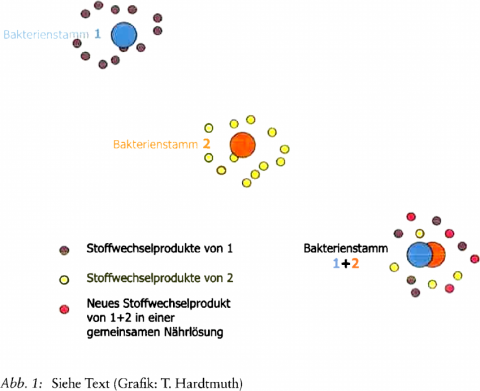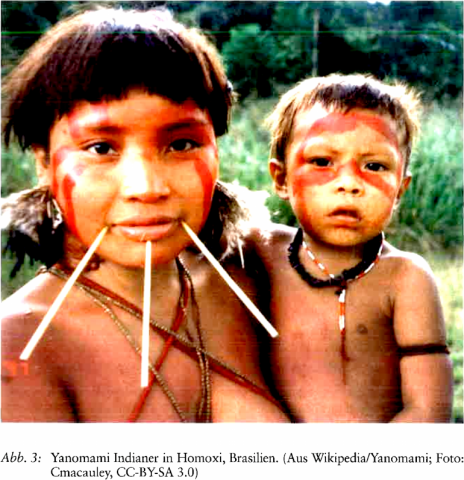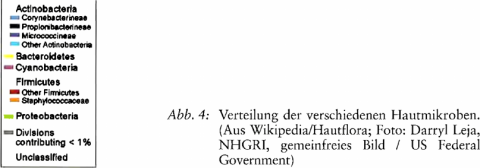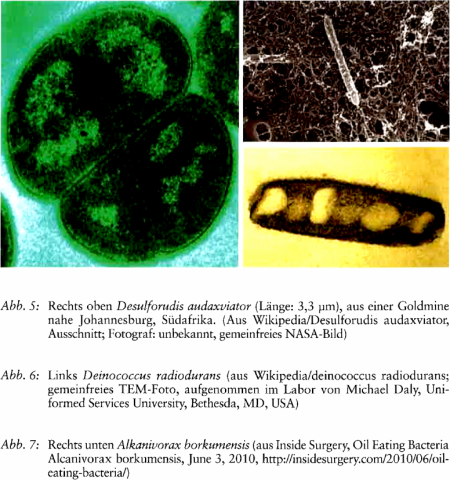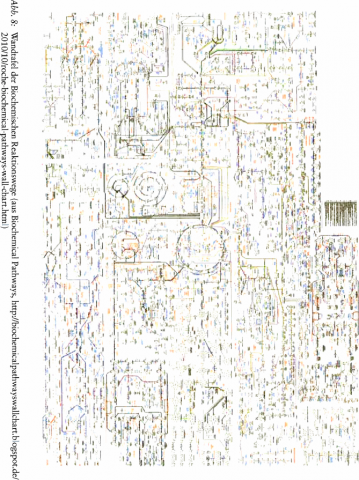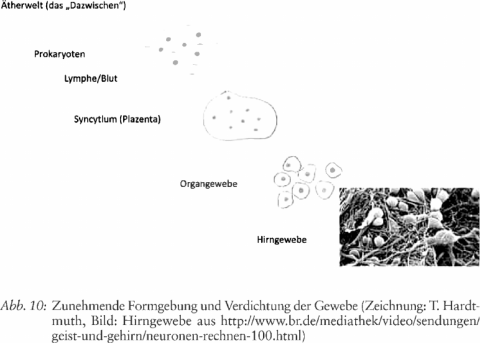Mikrobiom und erweiterter Organismusbegriff
Export Article Citation as
- Download price : €6
Abstract:
Since the modern process of genome sequencing has made available an extensive amount of research findings, our knowledge of microbial life in the human organism and wider nature has greatly advanced. At the same time it has raised new issues and perspectives which point to a paradigm Shift, particularly in medical thinking. Here it is above all the interactions of brain and intestine microbiomes that shed an entirely new light on a series of psychiatric, neurodegenerative and other metabolic diseases. It appears that the usual methods of genetic and biochemical analysis can no longer grasp the complexity of the connections in the microbial world, and they can only be understood through a broadened systems thinking oriented to the wider surroundings. The basic question regarding the epistemic approach to the specific principles of life acquires through microbiome research a wholly new relevance, and revives the old criticism of the Cartesian dualism paradigm which hitherto the epistemological underpinnings of modern science have brought us, albeit mostly unconsciously. With the help of the spiritual scientific concept of the etheric, bridges can be built here which can not only throw light on the interdependence of intestine and brain, but also enable deeper insight into the body-soul problem. The human thought-organisation as a context-generating component of reality, and the outer biological phenomena interpenetrate and complement one another to form an extended concept of the organism.
References
- BAER, U. (2007): Innenwelten der Demenz, 5.67. Neukirchen-Vluyn
- BEN-BARAK, I. (2010): Kleine Wunderwerke — die unsichtbare Welt der Mikroben, S. 213. Heidelberg
- BIK, E. M. (2016): The hoops, hopes, and hypes of human microbiome research. Yale J. Biol. Med. 89(3): 363-373
- BLOOM, H. (1997): Von sozialen Synapsen zu sozialen Nervensträngen: Komplexe, adaptive Systeme im Jurassic—Zeitalter. Internet, Telepolis 02. August 1997
- BOETIUS, A. (2001): Tiefseeforschung: Anaerobe Oxidation von Methan durch eine mikrobiclle Symbiose. Biospektrum 6: 536-538
- BRETTSCHNEIDER, H. (2014): Die Sinnlichkeit des Menschen. Der Leib als Instrument der freien Weltmwendung des Selbst. Jahrbuch für Goetheanismus 2014: 265-287. Niefern-Öschelbronn
- BUESING, N. & AL. (2009): Microbial communities in contrasting freshwater marsh microhabitats. FEMS Microbiology Feology 69(1): 84-97
- CLEMENTE, J. & AL. (2015): The microbiome of uncontacted Amerindians. Science Advances 1 (3): e1500183.d0i:10.1126/sciadv.1500183
- COSTELLO, E. K. & AL. (2012): The application of ecological theory toward an understanding of the human microbiome. Science 336: 1255 ff.
- CURTIS, T. P., SLOAN, W. T. (2004): Prokaryotic diversity and its limits: microbial community structure in nature and implications for microbial ecology. Current Opinion in Microbiology 7(3): 221-222
- CYPIONKA, H. (2003): (Paläomikrobiologe), Vortrag Universität Oldenburg am 8.1.2003: Reise in die tiefe Biosphäre. httpr//www.pmbio. icbm.de/download/biosphaere.pdf
- DASH, S. R. (2015): Achse Darm—Gehirn: Was das Mikrobiom mit Demenz, Multipler Sklerose und Depression zu tun hat. Medscape 17. Apr. 2015
- DE FRANCESCO, L. (2012): Life technologies promises $1,000 genome. Nat. Biotechnol. 30: 126
- DÜRR, H.-P. (2008): https://www.youtube.com/watch?v=rT6ekqvt42k
- DÜRR, H.-P. (2012): Es gibt keine Materie. Amerang
- EGE, M. & AL. (2011): Exposure to enviromnental microorganisms and childhood asthma. New Engl. J. Med. 364: 701-709. February 24, 2011. doi: 10.1056/NEJM03100730
- FIERER, N. (2008): The influence of sex, handedncss, and washing on the diversity of hand surface bacteria. Proc. Natl. Acad. Sci. USA. 105(46): 17994-17999. doi: 10.1073/pnas. 0807920105
- FIERER, N. (2010): Forensic identification using skin bacterial communitics. PNAS 107(14): 6477-648 1
- GEHLIG, R. (2016): Ossifikationsprozess als treibende Kräfte für die Krebserkrankung. JAhrbuch für Goetheanismus 2016: 149-206. Niefern-Öschelbronn
- GERSHON, M. (2001): Der kluge Bauch. Die Entdeckung des zweiten Gehirns. München
- GILOTEAUX, L. & AL. (2016): Reduced diversity and altered composition of the gut microbiome in individuals with myalgic encephalomyelitis/chronic fatigue syndrome. Microbiome 4: 30. DOI: 10.1186/840168—016—0171-4
- GOUGH, E., SHAIKH, H., MANGES, R. (2011): Systematic review of intestinal microbiota. Transplantation (fecal bactcriotherapy) for recurrent Clostridium difficile infection. Clinical Infectious Diseases 53: 994-1002
- GUR, T. L., BAILEY, M. T. (2016): Effects of stress on commensal microbes and immune system activity. Adv. Exp. Med. Biol. 874: 289-300. doi: 10.1007/978-3-319-20215-0_14
- HARACH, T. & AL. (2017): »Reduction of Abeta amyloid pathology in APPP81 transgenic mice in the absence of gut microbiota«.Scientific Reports 7, Article number: 41802 DOI: 10.103 8) srcp41802
- HARDTMUTH, T. (2015): Tiermast, Mikroorganismen und die Biologie der Moral. die Drei 3/20] 5 : 11-22
- HARDTMUTH, T. (2011): In der Dämmerung des Lebendigen — Hintergründe zu Demenz, Depression und Krebs. Heidenheim
- HARDTMUTH, T. (2009): Mensch und Affe aus neuroimmunologischer Sicht. die Drei 10/2009: 47
- HEISENBERG, W. (1969): Der Teil und das Ganze, S. 123/124. München (1996)
- HOLZER, P. (2015): Darm-Hirn- und Hirn-Darm-Achse: Eine bidirektionale Kommunikation. Gastroenterologie & Hepatologie. Universum Innere Medizin 08|2015
- HÜTHER, G. (2016): Mit Freude lernen, ein Leben lang. Göttingen
- ILLI, S. & AL. (2012): Protection from childhood asthma and allergy in Alpine farm environments — the GABRIEL Advanced Studies. J. Allergy Clin. Immunol. 129(6): 14701477. e6 . doi: 10.1016/j.jaci.2012.03.013. Epub 2012 Apr. 24
- KANG, D.-W & AL. (2017): Microbiota transfer therapy alters gut ecosystem and improvcs gastrointestinal and autism symptoms: an open-label study. Microbiome 5: 10
- KEGEL, B. (2016): Die Herrscher der Welt. Köln
- LAX, S. & AL. (2014): Longitudinal analysis of microbial interaction between humans and the indoor environment. Science 345 (6200): 1048-1052. doi: 10.1 126/5cience.1254529
- MARGULIS, L., SAGAN, D. (1999): Leben — vom Ursprung zur Vielfalt, S. 70. Berlin
- MARTIROSIAN, G. (2009): Clostridium spp. spores in pathomechanism of autism. Wiad Lek. 62(2): 119-122
- MARTIROSIAN, G., EKIEL, A., APTEKORZ, M. &: AL. (2011): Fecal lactoferrin and Clostridiurn spp. in stools of autistic children. Anaerobe 17(1): 43-45
- PELSSER, L. M. & AL. (2011): Effects of a restricted elimination diet on the behaviour of children with attention—deficit hyperactivity disorder (INCA study): a randomised controlled trial. Lancet 377( 9764): p494-503. DOI: httpz//dx.doi.org/IO.1016/30140-6736(10)62227-1
- PREZA, D. & AL. (2009): Diversity and site-specificity of the oral microflora in the elderly. Eur. J. Glin. Microbiol. Infect. Dis. 28(9): 1033-1040. doi: 10.1007/510096-009-0743—3. Epub 2009 Apr. 17
- RITTELMEYER, C. (2002): Pädagogische Anthropologie des Leibes, Biologische Voraussetzungen der Erziehung und Bildung. München
- ROBERTS, L., DAVENPORT, R. J., PENNISI, E., MARSHALL, F.. (2001): A history of the human genome project. Science 291: 1195-1195
- ROHEN, J.W. (2000): Morphologie des menschlichen Organismus, S. 152. Stuttgart
- ROSSLENBROICH, B. (2016): The significance of an Enhanced Concept of the organism for medicine. Evidence-Based Complementary and Alternative Medicine Volume 2016, Article ID 1587652
- ROSSLENBROICH, B., HEUSSER, P. (2010): Entwurf einer organismischen Systemniologie. Jahrbuch für Goetheanismus 2010: 7-39. Niefern-Öschelbronn
- SÁNCHEZ-VILLEGAS, A. & AL. (2012): Fast—food and commercial baked goods consrunption and the risk of depression. Public Health Nutrition 3: 424-432. doi: httpsz//doi.orgj10.101 7/ 51368980011001856
- SHAPIRO, J. A. (2013): What natural genetic engineering does and does not mean. Huffington Post, THE BLOG 02/28/2013 06:17 pm ET | Updated Apr. 30, 2013
- SHAPIRO, J. A. (1992): Natural genetic engineering in evolution. Genetica 86: 99-111
- SIMON, M. (2008): Aspekte zu einer goetheanistischen Mikrobiologie. In: Naturwissenschaft heute im Ansatz Goethes, S. 152 bzw. 149-150. Stuttgart, Berlin
- SPECK, O. (2008): Hirnforschung und Erziehung: Eine pädagogische Auseinandersetzung mit neurobiologischen Erkenntnissen. München, Basel
- STEINER, R. (1912): Von der Initiation. Von Ewigkeit und Augenblick. Von Geisteslicht und Lebensdunkel (GA 138), 2. Vortrag, München 26.8.1912, Abs. 7. Dornach
- STEINER, R. (1920): Geisteswissenschaft und Medizin (GA 312), S. 84-86. Dornach
- STEINER, R. (1923): Die menschliche Seele in ihrem Zusammenhang mit göttlich—geistigen Individualitäten. Die Verinnerlichtmg der Jahresfeste (GA 224), S. 98. Dornach
- STEINER, R. (1924): Geisteswissenschaftliche Grundlagen zum Gedeihen der Landwirtschaft (GA 327), S. 306. Dornach
- STEINER, R. , WEGMAN, I. (1925): Grundlegendes für eine Erweiterung der Heilkunst (GA 27), S. 12. Dornach (1977)
- TASNIME, N. & AL. (2009): Dictary pattern and depressive symptoms in middle age. The British journal of Psychiatry 195(5): 408-413. doi: 10.1192/bjp.bp.108.058925
- VREELAND, R. H., ROSENZWEIG, W. D., POWERS, D. W. (2000): Isolation of a 250 million—year old bacterium from a primary salt crystal. Nature 407: 897-900
- WOLLENBERG, A. (2015): Neue Erkenntnisse zum Mikrobiom der Haut — Konsequenzen für die Therapie der atopischen Dermatitis. Vortrag 19. GD Jahrestagung, 17. März 2015 in Berlin
- ZIMMER, C. (2010): How microbes defend and define us. New York Times, 21.7.2010
- ZSCHOCKE, A. K. (2014): Darmbakterien als Schlüssel zur Gesundheit, S. 26 ff. München

